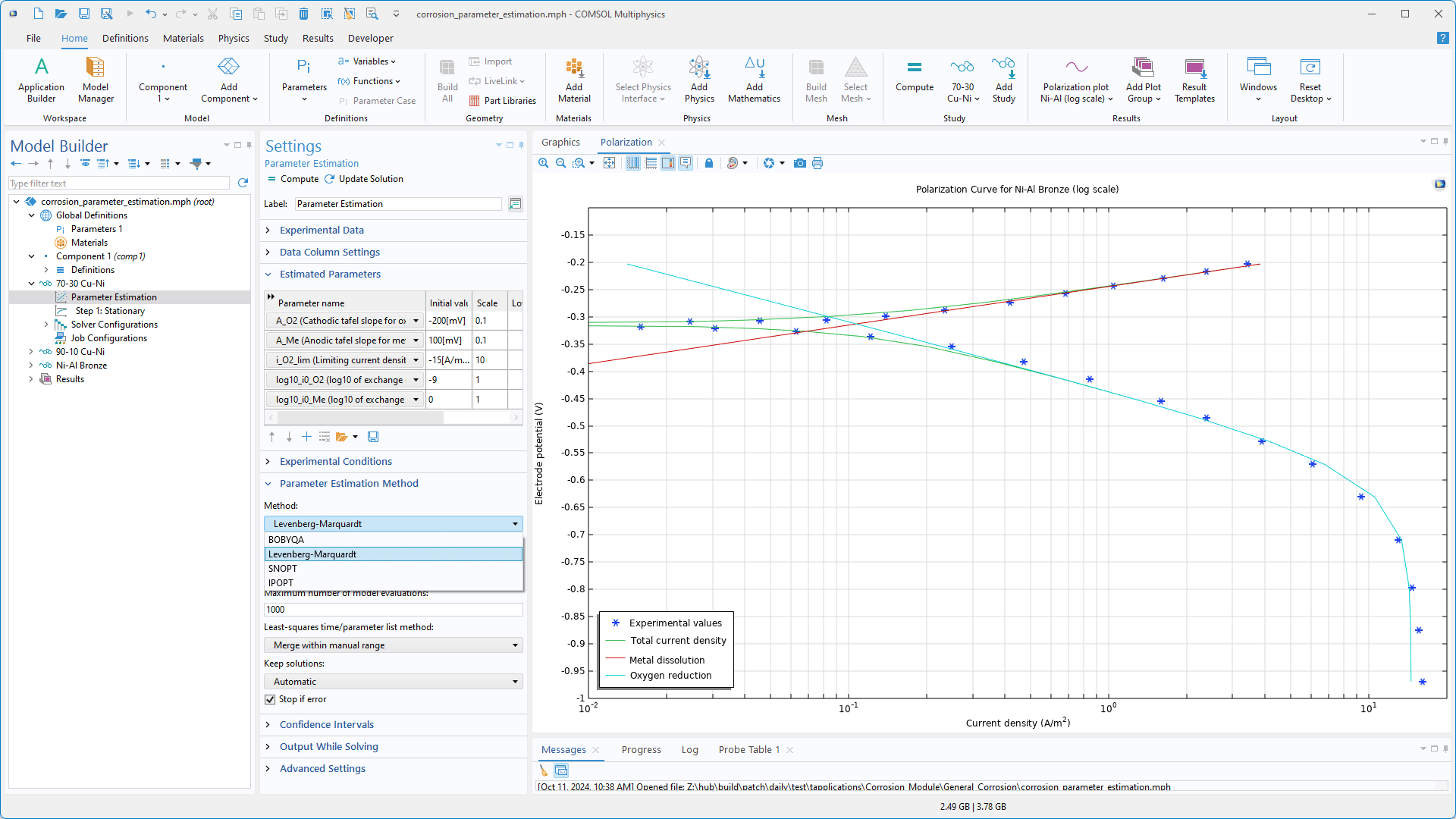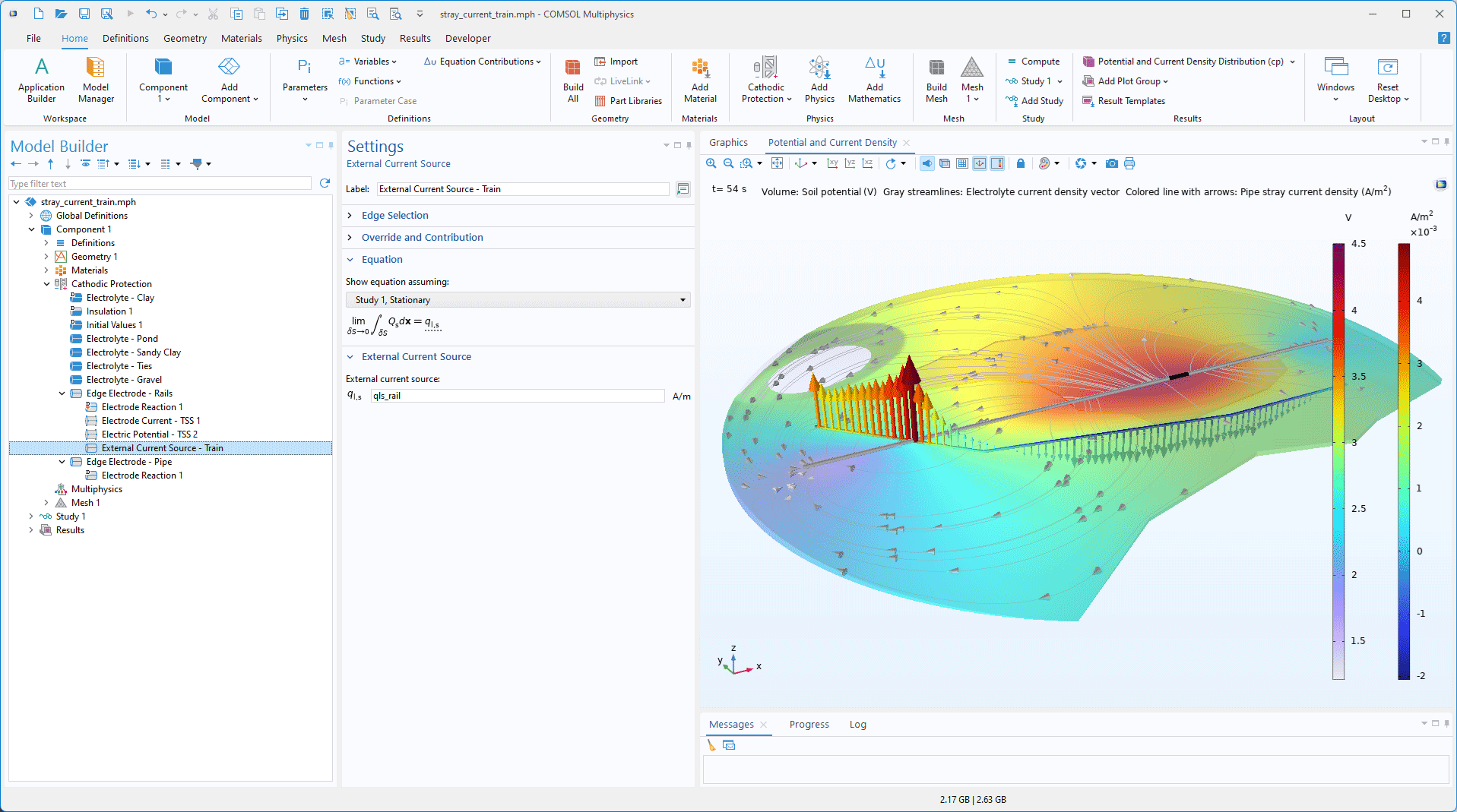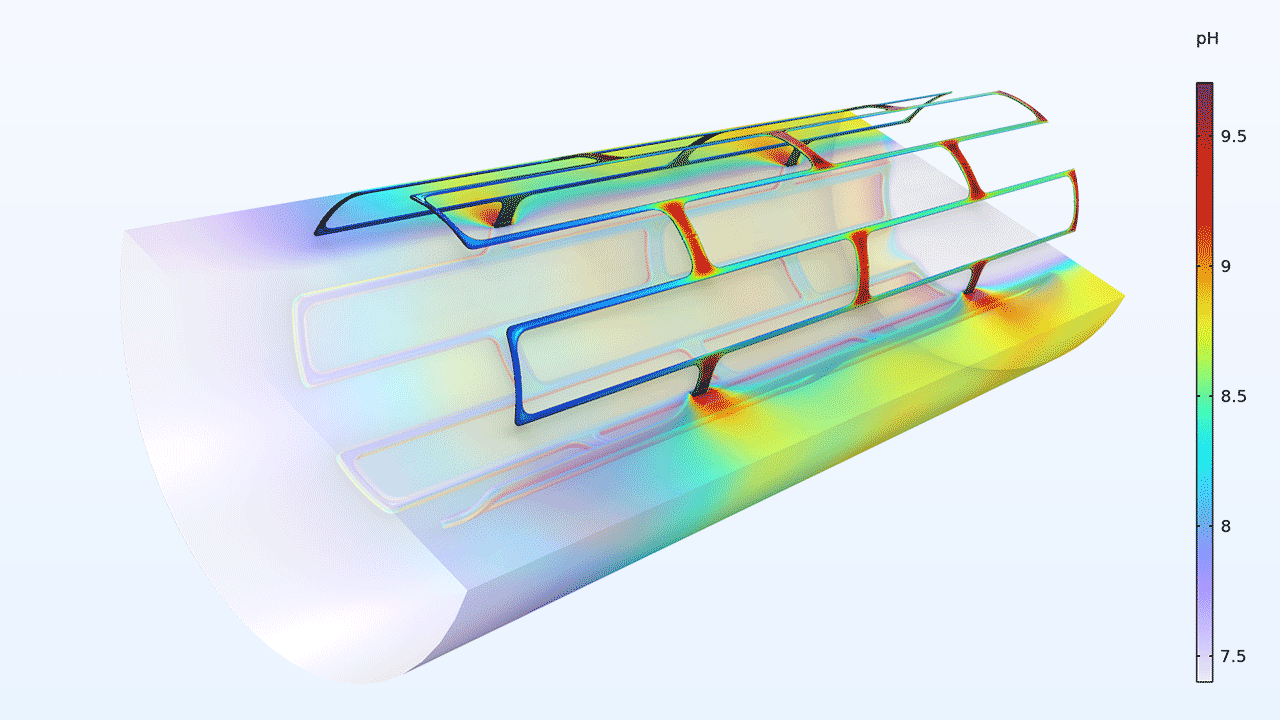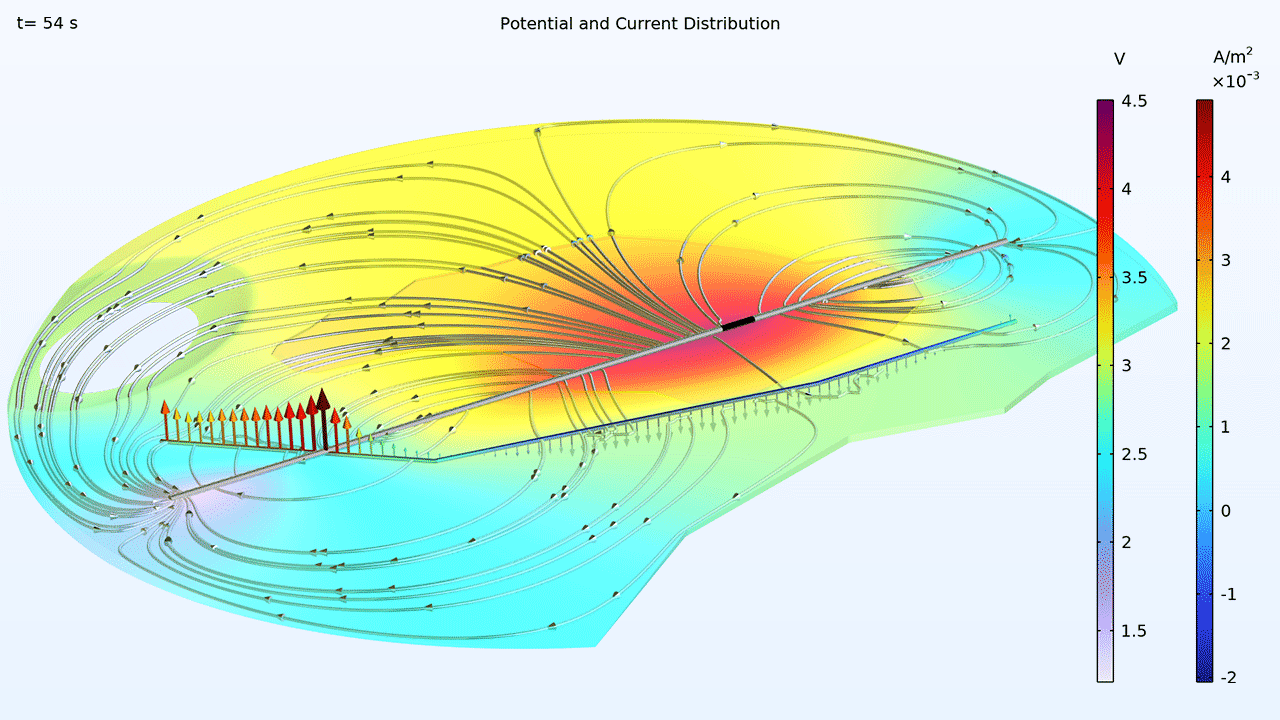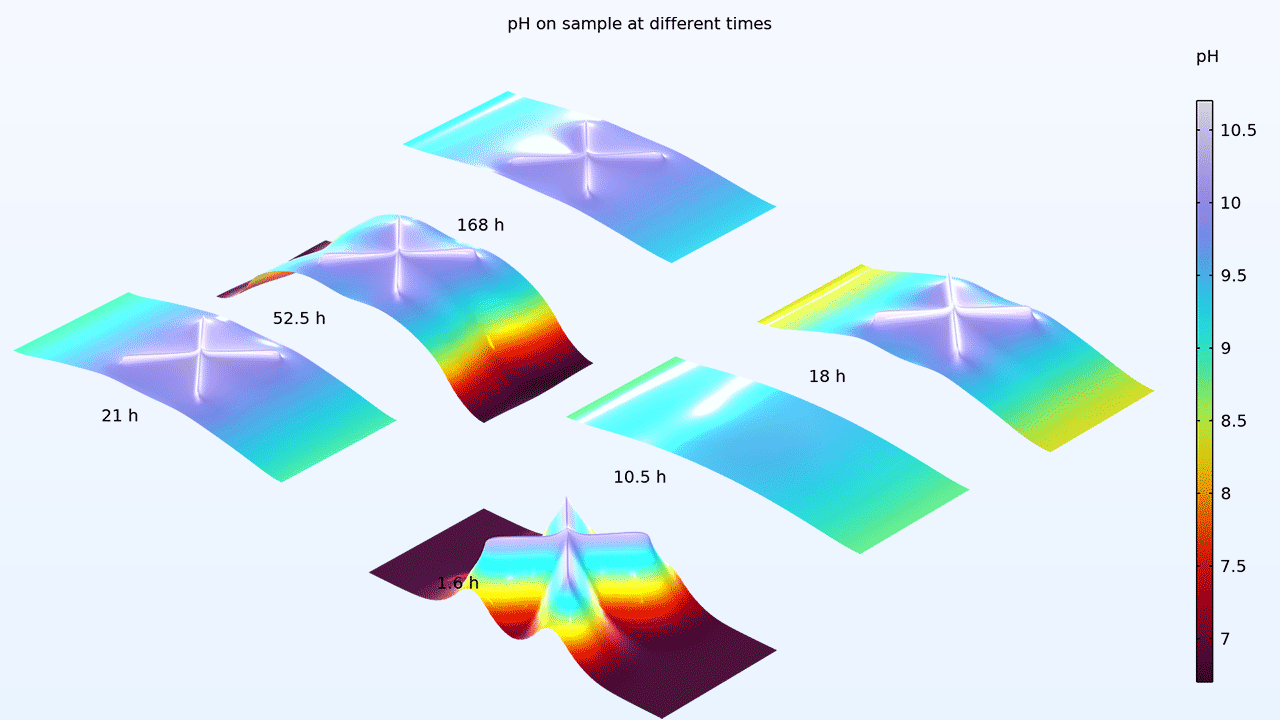腐蚀模块更新
参数估计
“腐蚀模块”现已集成了参数估计 研究步骤以及 BOBYQA、Levenberg–Marquardt 和 IPOPT 优化求解器,可用于通过拟合实验数据来确定腐蚀动力学和热力学的参数值。您可以参考腐蚀动力学参数估计教学案例,了解如何使用这些更新功能。
浓电解质传输
现在可以使用浓电解质传输 接口来模拟含有任意数量带电和不带电物质的电解质溶液中的传输过程,这是基于浓溶液理论,采用二元 Maxwell Stefan 扩散系数来定义的输运方程,并假设局部电中性。与 Nernst-Planck 方程相反,浓溶液理论假设电解质物质在浓度恒定的中性溶剂已超出稀浓度范畴。可模拟的典型电解质包括离子液体、盐熔体,以及带电物质浓度梯度不可忽略的高浓度溶液。您可以参考新的熔融碳酸盐传输教学案例,了解如何使用这一功能。
电极边新增“外部电流源”特征
边电极 特征新增一个外部电流源 子特征,可用于为铁轨或管道等细长金属对象定义电流源。您可以参考轻轨交通系统中列车的杂散电流教学案例,了解如何使用这一新特征。
“化学物质传递”接口中的“结果模板”
绘制实用且具有视觉吸引力的反应体系绘图通常需要花费大量时间,因为涉及多种反应物,需要绘制多个浓度场。为了节省时间,化学物质传递 接口中新增了多个结果模板,现在可以在图形 窗口中同时包含多达四种物质浓度的绘图阵列模板。这些结果模板 适用于所有化学物质传递 接口,不受附加模块的限制,特别适用于化工模块、“CFD 模块”、“多孔介质流模块”、“地下水流模块”和“微流体模块”中的多组分传递接口。
新的教学案例
COMSOL Multiphysics® 6.3 版本的“腐蚀模块”引入了多个新的教学案例。

